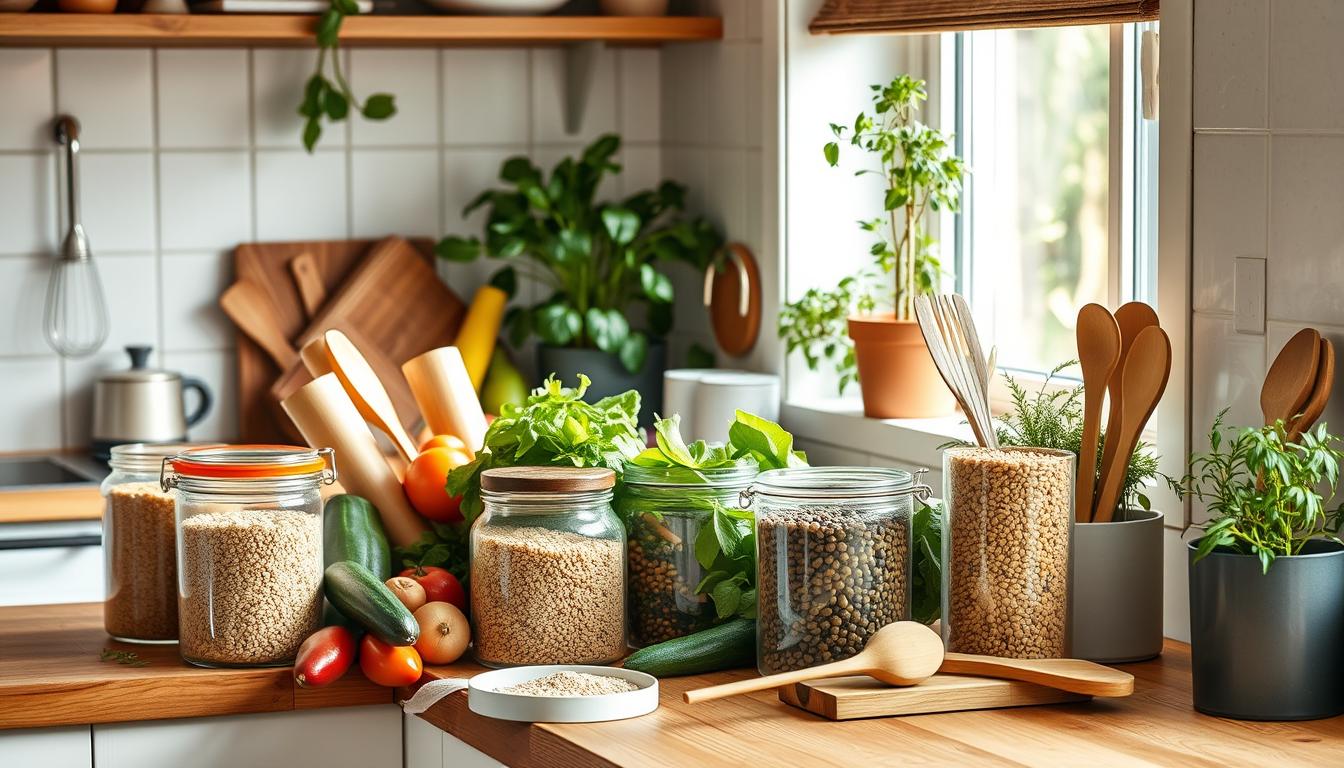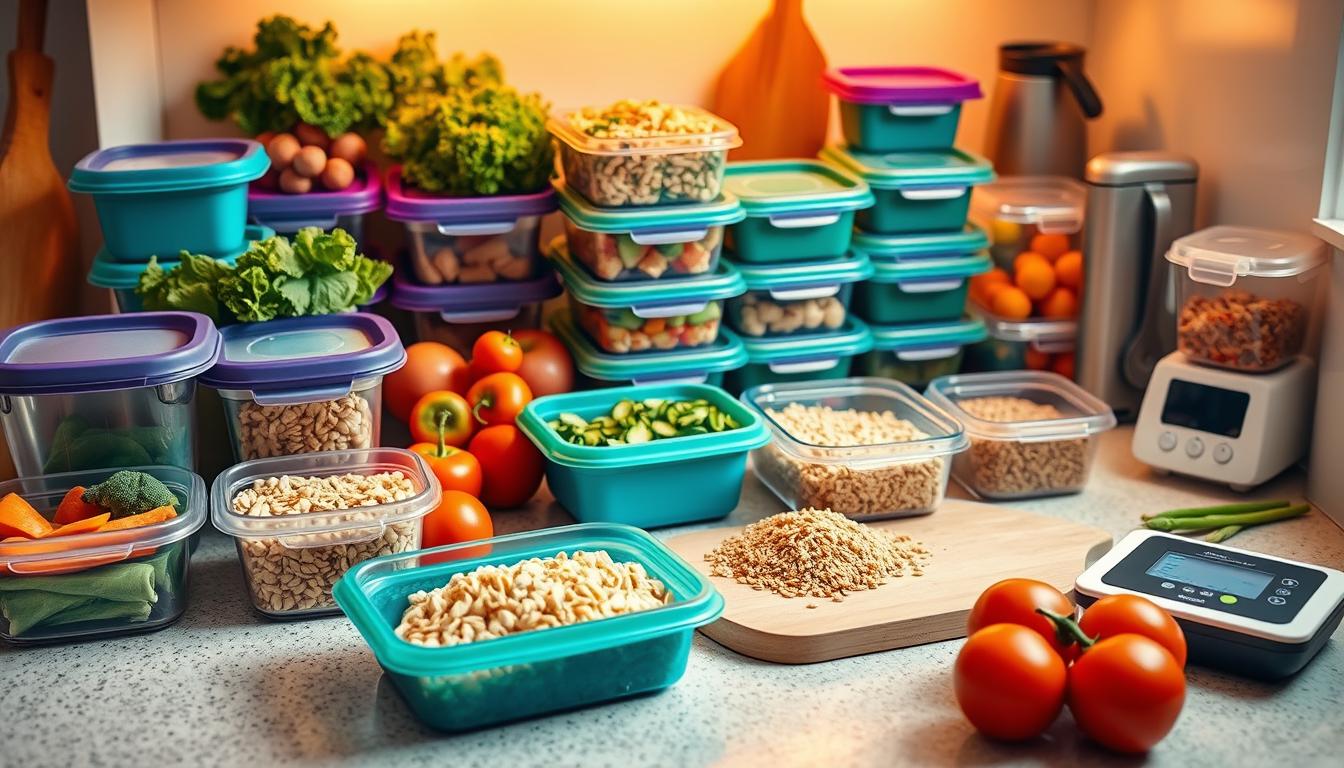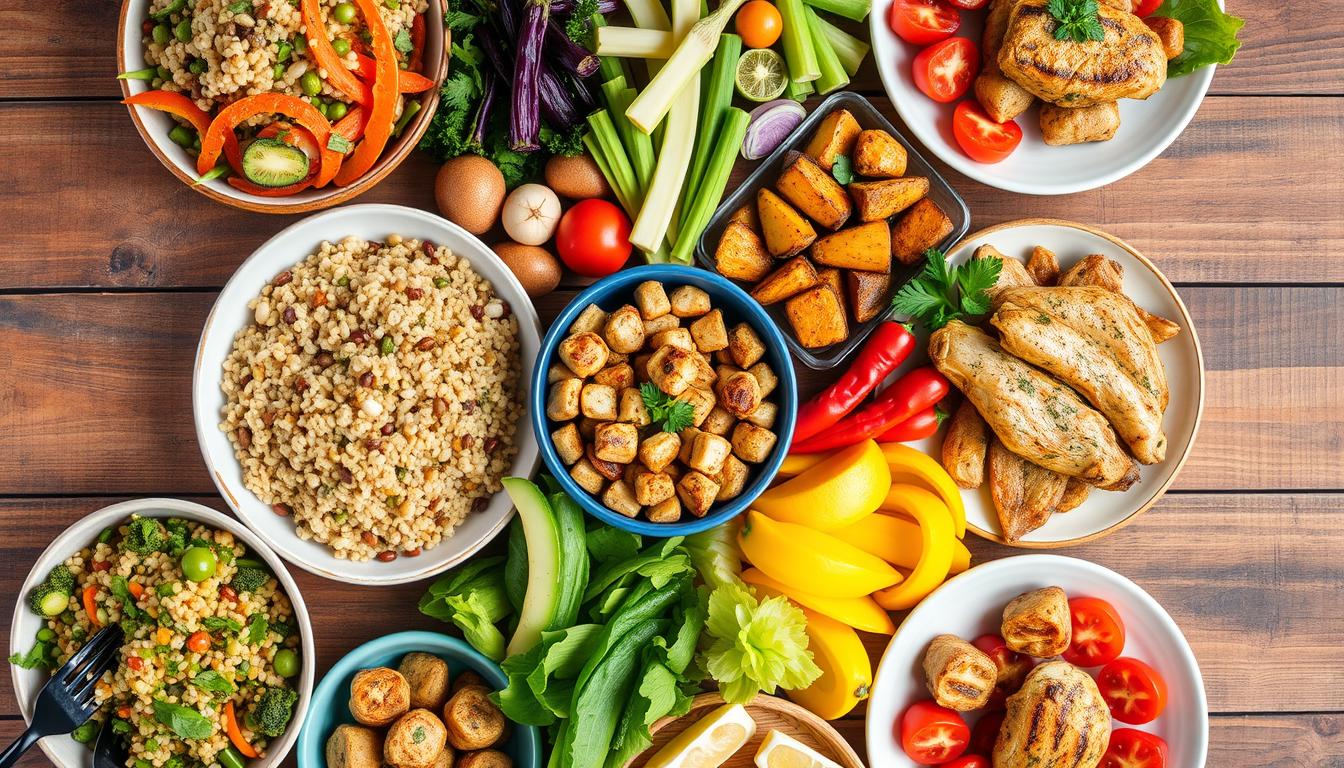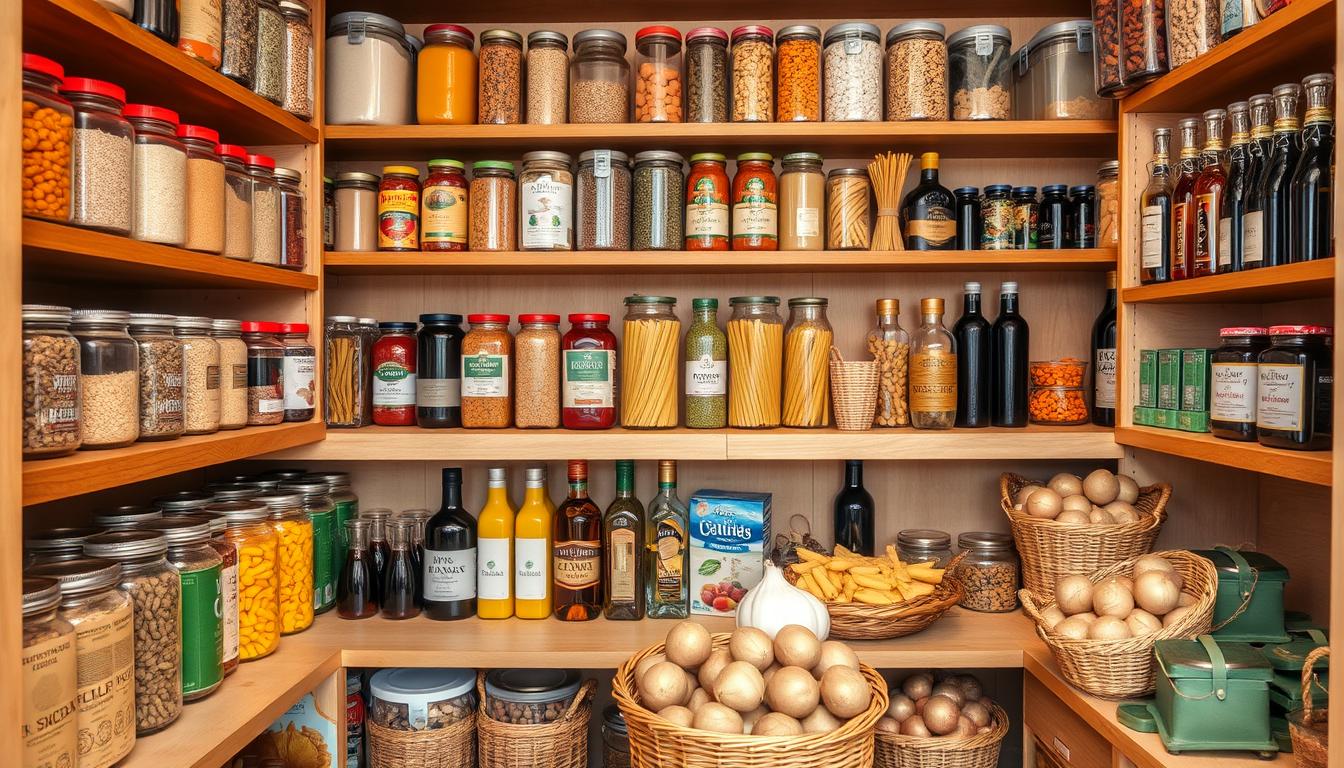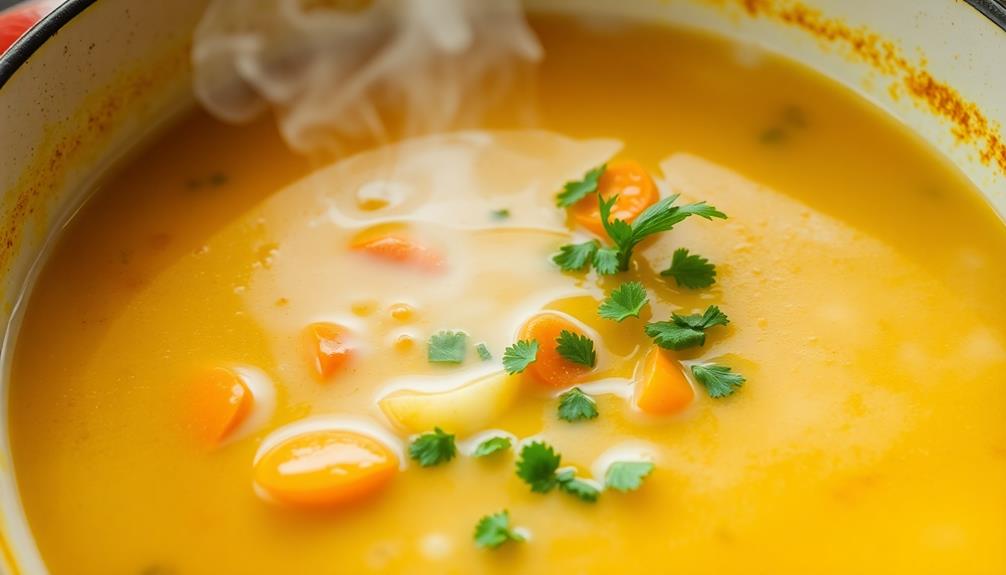Imagine standing in your kitchen, surrounded by vibrant vegetables and fragrant herbs, knowing that each ingredient you choose contributes positively to your health and the planet. This connection between what you prepare and its impact on the environment is profound. As you embark on your journey towards eco-friendly meal prep, it becomes clear that every decision you make—from selecting ingredients to the methods you use—can significantly contribute to sustainability. With 38% of all food in the United States going to waste and concerning levels of plastic pollution, it’s time to rethink our daily cooking habits. Incorporating sustainable cooking practices into your routine not only helps mitigate environmental issues but also brings a sense of fulfillment and purpose to your cooking. Whether it’s exploring eco-friendly recipes or adopting green cooking methods, you are making a powerful statement: nourishing yourself while caring for our planet.
Key Takeaways
- Meal planning can significantly reduce food waste.
- Choosing locally sourced ingredients lowers your carbon footprint.
- Plant-based proteins are an excellent alternative to conventional meat.
- Batch cooking helps save time and minimizes waste.
- Using reusable containers cuts down on single-use plastic pollution.
- Composting food scraps can enhance soil health and reduce greenhouse gas emissions.
The Importance of Eco-Friendly Meal Prep
Adopting eco-conscious meal preparation practices plays a crucial role in addressing both food waste reduction and the environmental implications of our dietary choices. Understanding how food choices affect the planet can inspire you to make more sustainable decisions in your daily cooking routines.
Understanding Food Waste in the U.S.
Over one-third of all food produced is wasted each year, equating to a staggering 1.3 billion tons. This waste not only signifies a loss of valuable resources but also contributes significantly to greenhouse gas emissions, as decomposing food releases methane gas. By engaging in meal planning, you can effectively mitigate this issue, promoting food waste reduction by encouraging thoughtful purchases and utilizing existing ingredients efficiently.
Environmental Impact of Food Choices
Your eating patterns have a powerful influence on environmental health. Research indicates that embracing sustainable diets can lead to a reduction of up to 26% in greenhouse gas emissions. Focusing on seasonal and local foods emerges as a key strategy to diminish transportation emissions, enhancing the overall benefits of your eco-conscious meal preparation. Foods such as mushrooms, seaweed, lentils, and organic fruits support both your health and the community by reducing your carbon footprint.
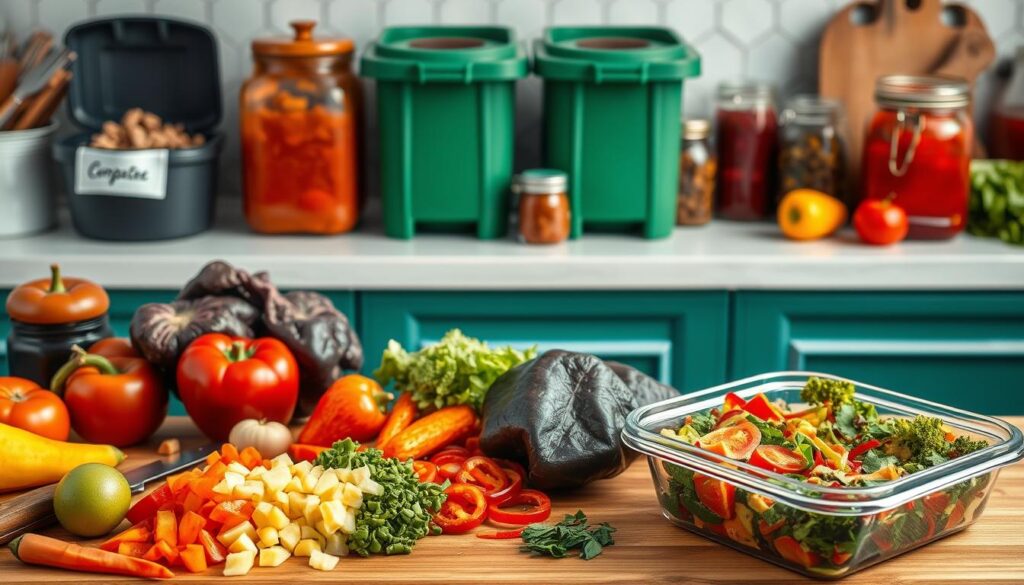
Meal prepping not only allows you to save time but also fosters mindful consumption, reinforcing your commitment to a sustainable lifestyle. Implementing various tips such as using seasonal ingredients, batch cooking, and efficient shopping can transform your kitchen habits and significantly lower the impact of food choices on the environment.
| Food Waste Statistics | Environmental Benefits |
|---|---|
| 1.3 billion tons of food wasted annually | 26% potential reduction in greenhouse gas emissions |
| 30-40% of food supply in the U.S. wasted | Support for local farmers by choosing seasonal produce |
| Average meal cost: $14 (out); $4 (home-cooked) | Lower additives and chemicals in home cooking |
Planning Your Meals: A Step Towards Sustainability
Effective sustainable meal planning starts with a well-organized approach. Taking the time to draft a meal plan schedule allows you to strategize efficiently, which contributes significantly to reducing waste. This practice targets unnecessary grocery purchases, enabling you to buy only what you need. Embracing efficient cooking strategies can turn your kitchen into an eco-friendly environment.
Creating a Meal Plan Schedule
Drafting a weekly meal plan can be a game changer. Having a structured schedule minimizes the chances of food spoilage and waste. Consider incorporating these practices:
- Identify meals that share ingredients to maximize usage.
- Plan recipes that utilize leftovers creatively for subsequent meals.
- Allocate specific days for grocery shopping based on your meal plan.
- Choose seasonal produce for enhanced freshness and local support.
Maximizing Ingredients and Reducing Waste
Utilizing what you already have on hand furthers the goal of sustainable meal planning. By incorporating pantry staples into your recipes, you minimize waste significantly. Here are some waste reduction tips to adopt:
- Transform leftover vegetables into stir-fries or soups.
- Use overripe fruits for smoothies or baking.
- Get creative with herbs and spices to breathe new life into old ingredients.
The transition to efficient cooking strategies not only eases the burden of meal preparation but also positively impacts the environment. By planning meals thoughtfully and creatively using ingredients, your kitchen will become a hub of sustainability.
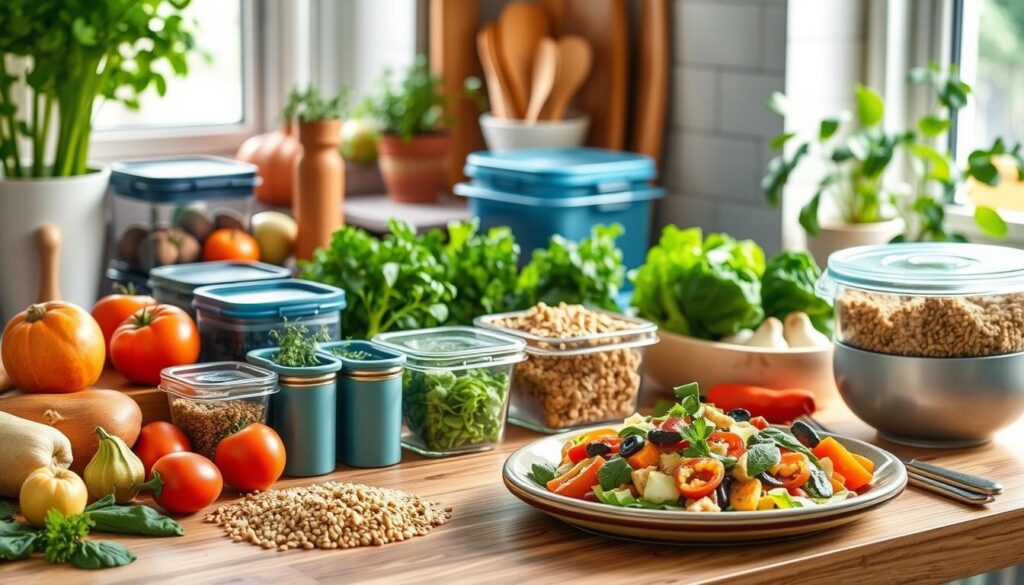
| Day | Meal | Ingredients | Leftover Usage |
|---|---|---|---|
| Monday | Vegetable Stir-Fry | Broccoli, Carrots, Tofu | Extra Tofu for Salad |
| Tuesday | Quinoa Bowl | Quinoa, Beans, Corn | Extra Corn in Taco |
| Wednesday | Vegetable Soup | Mixed Vegetables, Stock | Soup as Sauce for Pasta |
| Thursday | Fruit Smoothie | Banana, Spinach, Yogurt | Use Leftover Spinach in Salad |
| Friday | Homemade Pizza | Pizza Dough, Tomato Sauce | Pizza Crust for Tarts |
Sustainable Food Sourcing
Embracing sustainable food sourcing can significantly impact both your health and the environment. By focusing on local food sourcing, you contribute to fewer emissions related to transportation while ensuring access to fresher produce. Understanding the benefits of buying locally highlights the importance of community support and environmental conservation.
Benefits of Buying Locally
Choosing to buy from local markets or direct from farmers introduces numerous advantages:
- Freshness: Local food often arrives at your table within hours of being harvested.
- Seasonal Variety: You gain access to ingredients at their peak in flavor and nutritional value.
- Supports Local Economy: Your purchases help local farmers and businesses thrive.
- Reduced Carbon Footprint: Less transportation means lower emissions, benefiting the environment.
Finding Organic and Ethical Ingredients
When shopping for ingredients, prioritizing organic ingredients not only enhances the quality of your meals but also supports ethical culinary practices. Here are steps to guide you:
- Visit local farmers’ markets for fresh, organic produce.
- Research stores and suppliers that prioritize sustainability and ethical sourcing.
- Look for certifications that confirm organic and ethical practices.
- Consider restaurants that promote sustainable food sourcing; they often reflect quality in their menus.

Implementing Sustainable Cooking Practices
Embracing sustainable culinary techniques can transform your kitchen into an eco-friendly space. Simple adjustments in how you cook and choose ingredients can significantly reduce your environmental impact. Two fundamental areas to focus on are selecting green cooking methods and reducing energy consumption.
Choosing Green Cooking Methods
Green cooking methods play a crucial role in sustainable cooking. Opting for energy-efficient cooking practices like steaming, sautéing, and microwave cooking can help conserve energy compared to traditional methods. Steaming vegetables retains nutrients while using less energy, making it an excellent choice for healthy meals. Furthermore, these methods produce less waste, contributing to a more sustainable kitchen.
Reducing Energy Consumption in the Kitchen
Energy-efficient cooking can ease the strain on your utility bills and contribute to a greener planet. Strategies such as batch cooking allow you to prepare several meals at once, reducing the time your appliances are in use. Investing in modern appliances, such as the CHEF iQ Smart Cooker, can be a game-changer. This appliance uses less energy than conventional cooking methods and offers various plant-based recipes that support sustainable eating habits.

To optimize energy use in the kitchen, consider using slow cookers or pressure cookers, which are known for their efficiency. Incorporating these practices into your cooking routine not only supports sustainable culinary techniques but also minimizes energy waste, allowing you to enjoy delicious meals while being conscious of your environmental footprint.
Eco-Friendly Recipes for Every Meal
Embracing eco-friendly meal recipes can transform your daily cooking into a sustainable practice. Beginning with breakfast, consider the ingredients you choose. Opting for wholesome, plant-based elements nurtures not only your body but also the environment.
Creating Healthy Breakfast Options
Start your day right with sustainable breakfast ideas like smoothie bowls. These bowls can be packed with local fruits, providing essential nutrients while minimizing your carbon footprint. Another excellent choice is oatmeal topped with nuts and seeds. This meal is rich in fiber and packed with energy, helping you power through the morning. When using seasonal fruits, you not only get the best flavor but also support local agriculture.
Nutritious Lunch and Dinner Recipes
For lunch and dinner, consider meals such as quinoa salads featuring roasted seasonal vegetables. This not only adds color and texture but also keeps your meals fresh and vibrant. Lentil soups are another nutritious option, especially when fortified with local greens. These healthy lunch and dinner recipes keep your diet balanced while being responsible about ingredient sourcing. Using less processed foods helps reduce energy consumption and packaging waste.
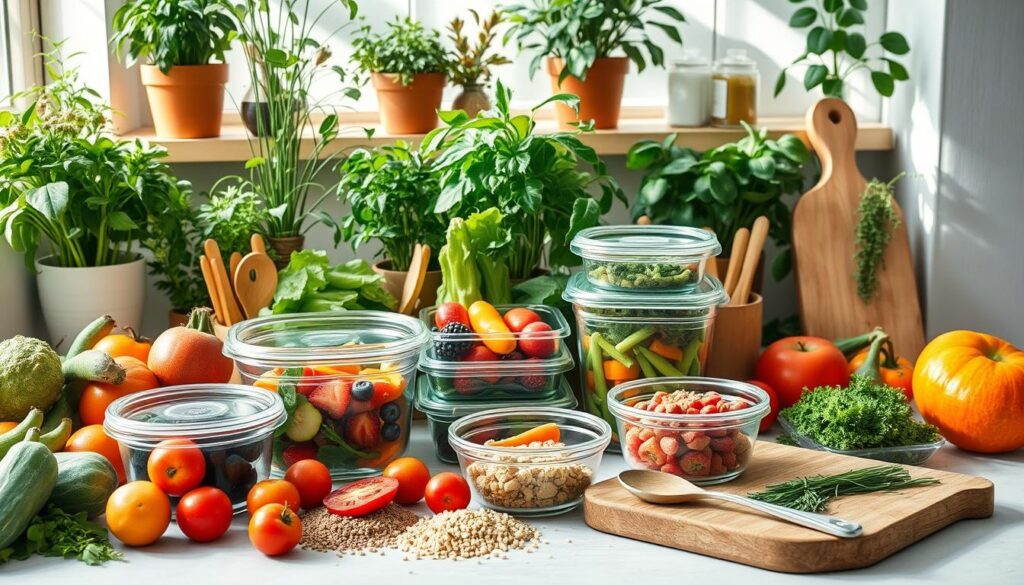
Utilizing Leftovers Creatively
In a world where around one-third of all food produced is wasted, it’s essential to adopt creative leftover recipes to combat this issue. Repurposing leftovers not only helps you enjoy delicious meals but also plays a significant role in reducing food waste. By transforming what may seem like remnants into exciting new dishes, you can contribute to a more sustainable kitchen.
Repurposing Leftovers into New Meals
Leftover proteins, such as roasted chicken or holiday ham, offer fantastic opportunities to create entirely new meals. Consider mixing those leftovers into stir-fries, casseroles, or soups, enhancing flavors with fresh ingredients. This approach not only promotes creativity in the kitchen but also maximizes your grocery budget, turning potentially wasted items into culinary delights. You can join community initiatives or access online platforms where people share creative leftover recipes and tips. Such resources foster a culture of sustainability, while helping to reduce food waste collectively.
Best Practices for Freezing Leftovers
Properly freezing food practices extend the life of your leftovers, contributing to sustainable eating. Begin by identifying which foods freeze well, including soups, stews, and certain cooked grains. Using reusable containers ensures your leftovers remain fresh and accessible. Store them in appropriate portions, so you’ll have an easy meal ready when hunger strikes. For optimal taste and texture, consume frozen leftovers within 3-4 months. This strategy not only reduces food waste but also saves time in your busy schedule.
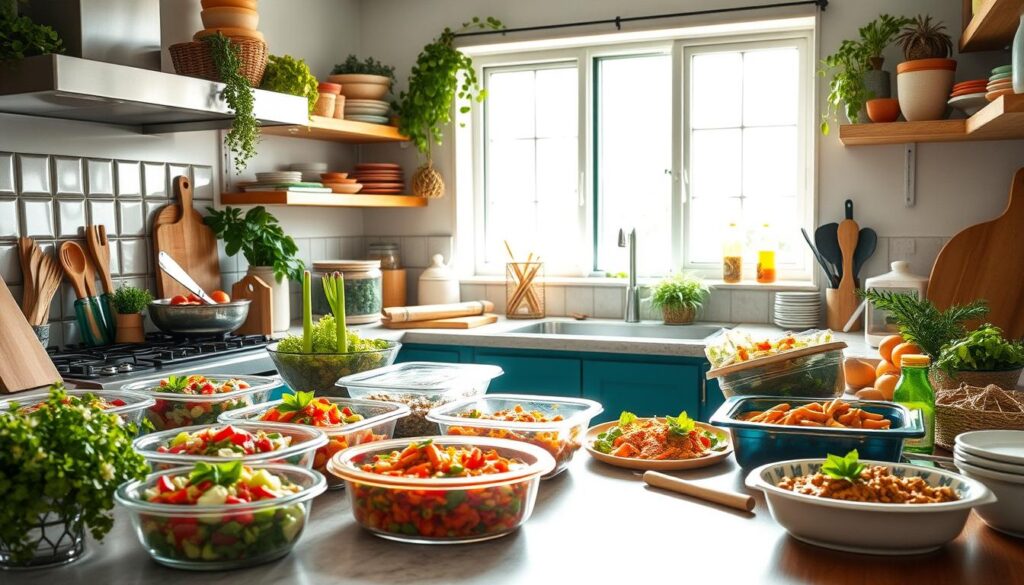
| Food Item | Freezing Time (Months) | Best Usage |
|---|---|---|
| Soups & Stews | 3-4 | Quick meals |
| Cooked Grains | 6 | Salads or side dishes |
| Casseroles | 3-4 | Family dinners |
| Leftover Proteins | 3-6 | Stir-fries or wraps |
Reducing Plastic Use in Meal Prep
Adopting strategies for reducing plastic waste in meal preparation is essential for creating a more sustainable environment. You can make a significant impact by choosing reusable meal prep supplies and engaging in eco-friendly shopping practices. Here are two key actions to take.
Choosing Reusable Containers
Selecting glass or metal containers offers a sustainable alternative to single-use plastics. These durable options not only minimize environmental impact but also provide long-term savings. By opting for reusable meal prep supplies, you decrease the demand for plastic packaging and contribute to reducing plastic waste. Look for containers that are easy to clean, stackable, and suitable for freezing or microwaving.
Using Reusable Shopping Bags
Switching to reusable shopping bags is another excellent way to embrace eco-friendly shopping practices. Ditching disposable plastic bags when shopping prevents harmful environmental repercussions and fosters a more sustainable lifestyle. Bring your reusable bags and encourage others to do the same for a collective effort in reducing plastic waste.

| Reusable Containers | Single-Use Plastics |
|---|---|
| Durable and long-lasting | One-time use only |
| Can be recycled or repurposed | Often non-recyclable |
| Contributes to reducing plastic waste | Increases landfill burden |
| Cost-effective over time | Higher long-term costs due to frequent purchases |
| Promotes sustainability | Encourages unsustainable habits |
Composting: A Sustainable Practice
Composting stands out as an effective method for reducing waste while nurturing the environment. Utilizing kitchen composting not only helps in reducing the amount of organic waste that contributes to landfills but also transforms food scraps into valuable resources for enriching soil. Understanding what can be composted and recognizing the various compost benefits can enhance your eco-friendly waste disposal practices.
What Can Be Composted?
Many items typically discarded can find a new life through composting. Consider the following compostable materials:
- Vegetable peels and scraps
- Coffee grounds
- Eggshells
- Fruit rinds
- Yard trimmings and leaves
By choosing to compost these items, you divert organic waste from landfills, allowing it to decompose naturally and enrich your garden soil. This practice mirrors successful initiatives like those in Seattle and San Francisco, where extensive composting programs have significantly reduced the amount of waste sent to landfills.
Benefits of Composting for Your Kitchen
Incorporating composting into your kitchen routine brings several advantages:
- Environmental Impact: Composting diminishes greenhouse gas emissions, particularly methane, which is released by decomposing organic matter in landfills and is far more potent than carbon dioxide.
- Nutrient-Rich Soil: Compost transforms kitchen waste into nutrient-rich compost, boosting soil fertility and supporting your gardening efforts.
- Enhanced Soil Health: Research indicates that compost-amended soils demonstrate improved water infiltration and increased soil biodiversity, vital for thriving plant life.
Opting for kitchen composting not only supports a circular economy but also contributes to a healthier environment. You actively participate in sustainable practices by diverting significant portions of food scraps—estimated to comprise around 21.6% of municipal solid waste—into compost. This way, kitchen waste becomes an asset rather than a liability.
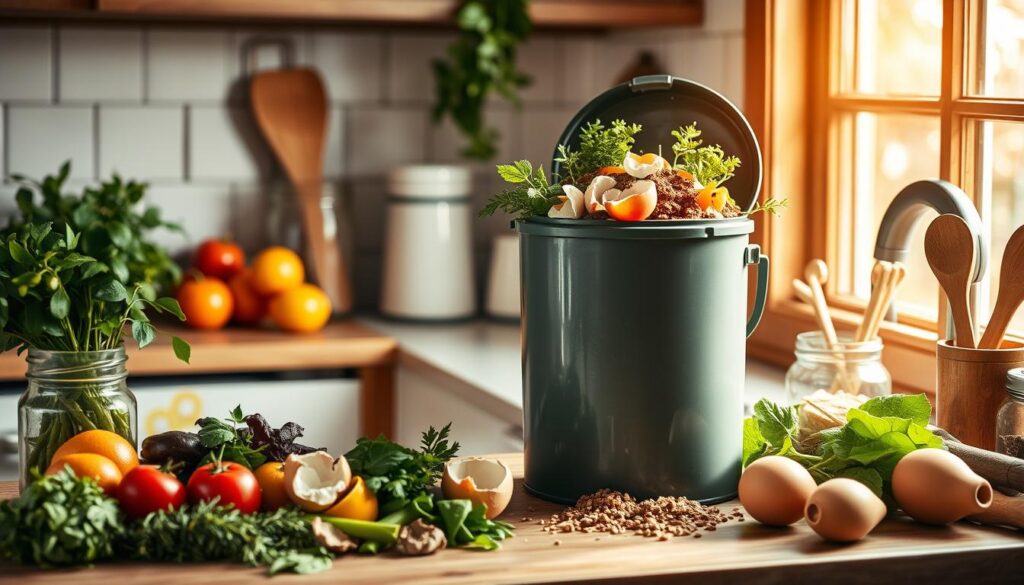
Conclusion
Embracing sustainable cooking practices is not merely a choice; it’s a powerful step towards a healthier planet and a more responsible lifestyle. Throughout this article, you’ve learned how eco-friendly meal prep, from conscious meal planning to selecting organic and ethical ingredients, plays a vital role in minimizing food waste and reducing your carbon footprint. By integrating these strategies into your routine, you not only contribute to environmental benefits of cooking but also foster a more sustainable kitchen environment.
It’s essential to realize that the way food is produced and consumed significantly impacts our ecosystem. By opting for more plant-based options and reducing meat consumption, you can help lower greenhouse gas emissions, conserve freshwater resources, and combat deforestation. Implementing these practices supports a shared responsibility to ensure equal access to food, enabling a zero hunger world that is attainable through collective efforts.
As you embark on your journey toward eco-friendly meal prep, remember that small changes can create meaningful impacts. From managing perishables wisely to repurposing leftovers, your choices contribute to a healthier lifestyle for both you and the environment. Let’s promote a greener future together, where sustainable cooking practices become the norm, leading to a more sustainable world for all.
